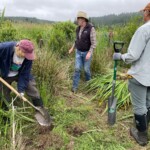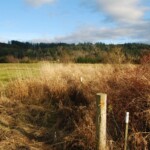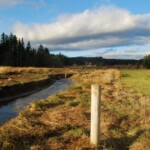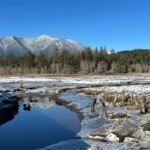Lower Donovan Creek Preserve
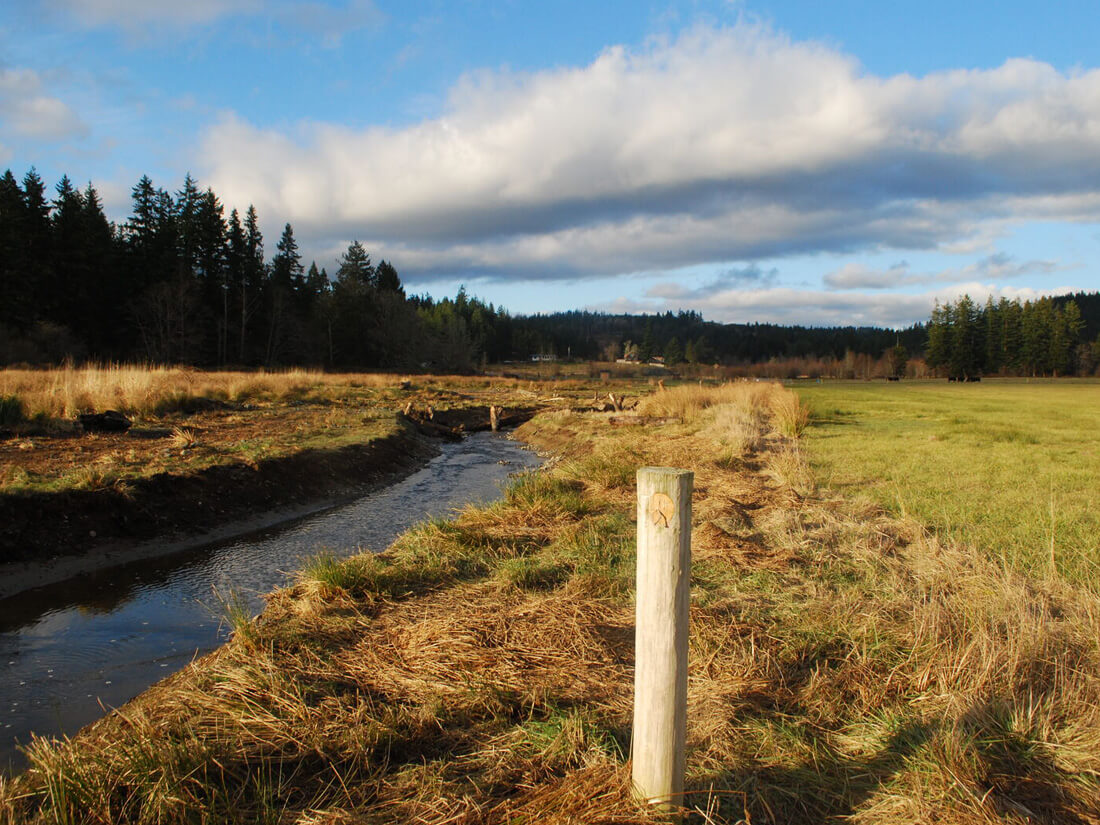
Lower Donovan Creek Preserve
Acres Preserved:
20
Year Conserved:
2012
Category:
Land Trust Preserve
Natural Features:
Lower Donovan Creek Preserve is an ecological intrigue with marine tidal influence on the southern edge, a surround of deciduous forest, growing evergreens on the northern edge, and an expansive feeling of openness. This marshland is magical with its diversity of animal and plant life.
- Dave Rugh, longtime volunteer preserve steward
A Birds-Eye View
On Quilcene Bay, downstream from Jefferson Land Trust’s Donovan Creek Wetland Preserve, lies the 20-acre Lower Donovan Creek Preserve. The preserve contains more than 1,400 feet of Donovan Creek, which feeds into Quilcene Bay’s saltwater tidal marsh, one of the largest tidal marsh complexes in Hood Canal. With the river, saltmarsh, wetlands, and young forests, this preserve provides vital habitat for local mammals, birds, and fish, including summer chum and coho salmon.
Lower Donovan Creek Preserve includes about 13 acres of Quilcene Bay’s precious tidal saltwater marsh. It’s an essential estuary nursery area for juvenile salmon, who pause here to shelter, feed, and make their fascinating physical transition between freshwater and saltwater (a necessary step of their life cycle) on their journey from the river to ocean.
In the Hood Canal region, where we’ve lost so many of our coastal wetland areas, the high-quality wetlands of this preserve are critical beyond measure. The protection and restoration of this site not only brings numerous benefits to the animals, plants, and people who share the larger Donovan Creek coastal wetland ecosystem, but it also contributes significant conservation value within Quilcene Bay, Hood Canal, and the greater Puget Sound.
The Preservation Story
Historically, as Donovan Creek meandered on its naturally determined path, it provided important spawning and rearing habitat for salmon and other fish. But beginning in the 1880s, agricultural activities impacted the creek and altered its path, severely degrading habitat quality and drastically reducing salmon numbers. The natural action of the river and the tides was curtailed, and the bay began to fill with silt.
Protecting and restoring the Donovan Creek coastal region has involved decades of collaborative efforts by many groups and organizations including Jefferson Land Trust, Hood Canal Salmon Enhancement Group (HCSEG), the Jamestown S’Klallam Tribe, Jefferson County, Hood Canal Coordinating Council, Washington Department of Fish and Wildlife, Jefferson County Conservation District, Mason County Conservation District, the Nature Conservancy, Washington Department of Ecology, and the US Fish and Wildlife Service (USFWS).
The protection and restoration of the Donovan Creek coastal ecosystem also builds on large-scale efforts to restore the entire Quilcene Bay delta and tidal marsh habitat to reverse impacts of human activities on threatened fish and wildlife habitat, degraded water quality, and harvestability of shellfish and other natural resources. This work continues to be spearheaded by HCSEG, which has opened up thousands of acres of salmon habitat in the bay.
In 2009, Jefferson Land Trust, Jefferson County Conservation District, HCSEG, and the Jamestown S’Klallam Tribe worked together to develop a restoration vision for Donovan Creek to improve the habitat quality of the stream corridor. In order to accomplish these goals, a portion of what is now Lower Donovan Creek Preserve would need to be restored and protected as part of the floodplain and estuary of Donovan Creek. Willing landowners also played a key role in the success of this significant project: when awareness of conservation efforts in their area reached them, they approached the Land Trust to offer to sell the property for conservation purposes.
In 2010, the Washington Department of Ecology and Jefferson Land Trust were jointly awarded a highly competitive USFWS Coastal Wetlands grant to perform the necessary restoration and purchase property interest in the Donovan Creek project area. With the purchase of this property by Jefferson Land Trust in 2011, Lower Donovan Creek Preserve was protected forever.
From 2011-2013, Lower Donovan Creek Preserve and the adjacent privately-owned Quilcene Heights conservation easement area underwent extensive restoration efforts led by HCSEG. These efforts included redirecting the creek; replanting the riverbank with a buffer of native shrubs and trees; and using logjams to direct the water’s flow, enhance water complexity, establish shaded pools for spawning, and create shelter for young salmon.
In the fall of 2013, chum and coho salmon returned to Donovan Creek for the first time in 20 years.
The Protected Property Today and Tomorrow
Our stewardship staff, with the help of committed preserve stewards and other volunteers, regularly care for the land, monitor wildlife, and keep improving habitat conditions by removing harmful weeds.
Every 5-10 years, the Land Trust also conducts habitat health assessments on the property. These assessments, carried out with the help of volunteers, allow us to evaluate the ecological integrity and functions of forests and streams within the preserve and track the progress of our land management goals.
As Land Trust staff and volunteers have cared for the preserve, we’ve enjoyed seeing the success of earlier restoration efforts. The forest is becoming more diverse and resilient, with a mix of woody shrubs, native conifer trees, and hardwood trees. With increased beaver activity along with human stewardship actions, the property experiences more natural flooding each year, creating calm, protected pools where fish and amphibians can deposit their egg sacs.
As we continue to improve the functionality of Donovan Creek and its tidal marsh, they also benefit other species that use the creek’s estuary and Quilcene Bay tidal marsh habitat, including Columbia River white sturgeon and numerous other native bivalves, crabs, coastal birds — and, notably, Olympia oysters. Quilcene Bay is a major site of oyster production, an important sector of our local economy.

